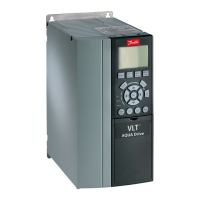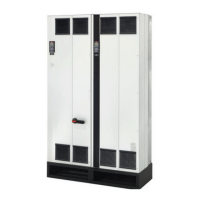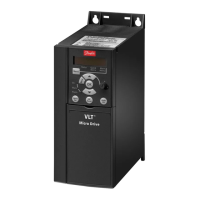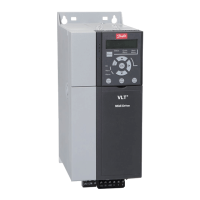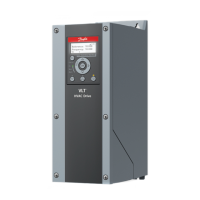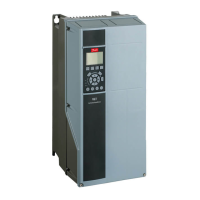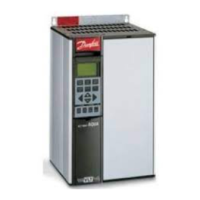3.3.2.4 How Line Interference Occurs
Line interference distortion of the sinusoidal waveform
caused by the pulsating input currents is referred to
generally as harmonics. Derived from Fourier analysis, it is
assessed up to 2.5 kHz, corresponding to the 50th
harmonic of the line power frequency.
The input rectiers of adjustable frequency drives generate
this typical form of harmonic interference on line power.
When adjustable frequency drives are connected to 50 Hz
line power systems, the 3rd harmonic (150 Hz), 5th
harmonic (250 Hz) or 7th harmonic (350 Hz) show the
strongest eects. The overall harmonic content is called
the total harmonic distortion (THD).
3.3.2.5
Eects of Line Interference
Harmonics and voltage uctuations are two forms of low-
frequency line interference. They have a dierent
appearance at their origin than at any other point in the
line power system when a load is connected.
Consequently, a range of
inuences must be determined
collectively when assessing the eects of line interference.
These include the line power feed, structure, and loads.
Undervoltage warnings and higher functional losses can
occur as a result of line interference.
Undervoltage warnings
•
Incorrect voltage measurements due to distortion
of the sinusoidal AC line voltage.
•
Cause incorrect power measurements because
only RMS-true measuring takes harmonic content
into account.
Higher losses
•
Harmonics reduce the active power, apparent
power, and reactive power.
•
Distort electrical loads resulting in audible
interference in other devices, or, in worst case,
even destruction.
•
Shorten the lifetime of devices as a result of
heating.
NOTICE!
Excessive harmonic content puts a load on power factor
correction equipment and may even cause its
destruction. For this reason, provide chokes for power
factor correction equipment when excessive harmonic
content is present.
3.3.3 Analyzing Line Interference
To avoid impairment of line power quality, a variety of
methods are available for analyzing systems or devices that
generate harmonic currents. Line power analysis programs,
such as harmonic calculation software (HCS), analyze
system designs for harmonics. Specic countermeasures
can be tested beforehand and ensure subsequent system
compatibility.
For analyzing line power systems, go tohttp://www.danfoss-
hcs.com/Default.asp?LEVEL=START for software download.
NOTICE!
Danfoss has a very high level of EMC expertise and
provides EMC analyses with detailed evaluation or line
power calculations to customers in addition to training
courses, seminars, and workshops.
3.3.4 Options for Reducing Line
Interference
Generally speaking, line interference from drives is reduced
by limiting the amplitude of pulsed currents. This improves
the power factor λ (lambda).
Several methods are recommended to avoid line
harmonics:
•
Input chokes or DC link chokes in the adjustable
frequency drives.
•
Passive lters.
•
Active lters.
•
Slim DC links.
•
Active front end and low harmonic drives.
•
Rectiers with 12, 18 or 24 pulses per cycle.
3.3.5
Radio Frequency Interference
Adjustable frequency drives generate radio frequency
interference (RFI) due to their variable-width current
pulses. Drives and motor cables radiate these components
and conduct them into the line power system.
RFI lters are used to reduce this interference on line
power. They provide noise immunity to protect devices
against high-frequency conducted interference. They also
reduce interference emitted to the line cable or radiation
from the line cable. The lters are intended to limit
interference to a specied level. Built-in lters are often
standard equipment rated for specic immunity.
System Integration
Design Guide
MG20N622 Danfoss A/S © 09/2014 All rights reserved. 55
3 3
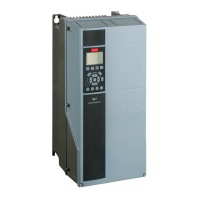
